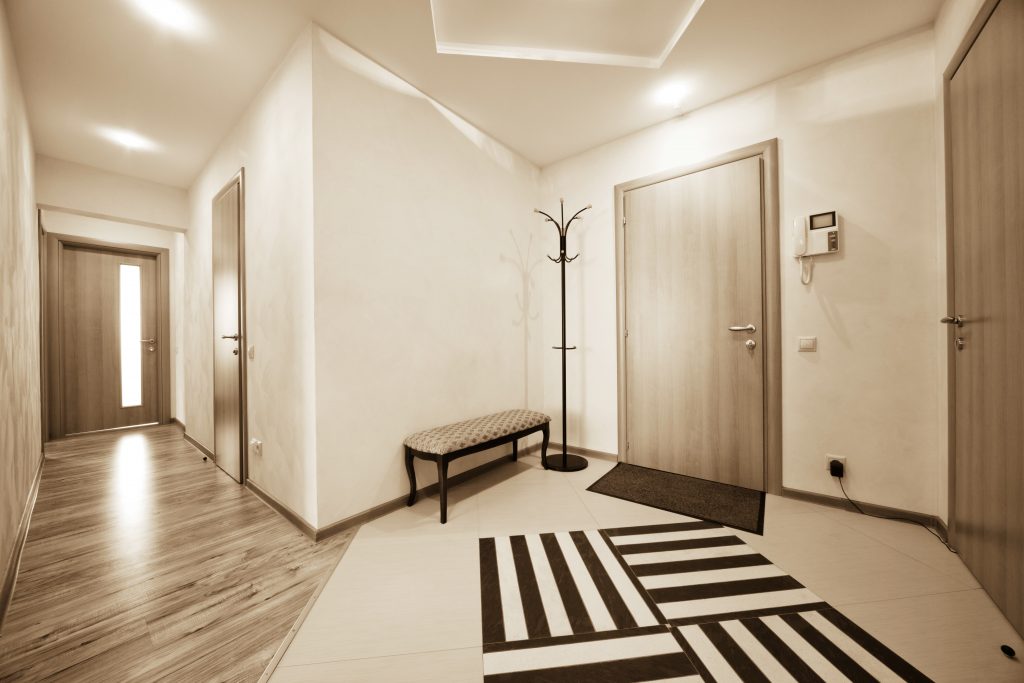A well-laid floor has no nooks or crannies in it. Scotia is the final key to a successful installation for solid wood, engineered wood and laminate flooring. That’s because such flooring needs to have an expansion gap around the room, and what Scotia does is fill in that gap by attaching to the skirting board and around the perimeter of the wall. Here’s what you need to know about Scotia flooring so you can make sure it’s both beautiful and functional.

Check the expansion gap
Your flooring has a specific expansion gap depending on the type of flooring as well as the size of the space. The expansion gap goes around the perimeter of the space and anything installed such as cabinets, pipes and door jambs. Its purpose is to ensure airflow and that the flooring can safely shift with temperature and not warp. Since solid wood, engineered wood, and laminate flooring are all commonly installed using the floating floor method, the planks will tend to contract when cool and expand when warm or moist.
If you happen to have an insufficient or no expansion gap for your flooring, what will happen is something called buckling. It causes a hump to form in the flooring. While repairable, it’s inconvenient and time-consuming, as you will need spacers to make sure the gap is uniform after cutting away from where the planks meet the wall and any vertical barriers.
An expansion gap usually matches the flooring’s thickness. So if you have wood flooring that’s 19 mm, for example, the expansion gap should be at least the same. On the other hand, you can have an expansion gap that is bigger than what is recommended, as a matter of taste.
Installing Scotia
Scotia differs from skirting in that skirting is simply a baseboard made of wood or vinyl that covers the expansion gap. However, it goes on top of the flooring rather than inside the gap. The Scotia depends on stable skirting as its base.
Some homeowners install skirting with Scotia moulding (coving) between the skirting and flooring Since skirting typically comes in white, the Scotia is often white as well and so will look like part of the skirting.
What is Scotia made out of? It can be solid, veneered, or MDF. Solid is made of solid wood, typically oak, and comes in lacquered or unfinished. Veneered is a softwood with a thin veneer of uncommon species like bamboo, walnut or sapelle. And MDF (or laminated) has foil or paper attached to the surface to match wood or laminate flooring.
It’s important for your Scotia to completely cover the expansion gap in order to keep out moisture and dust. When you measure for Scotia, allow 10% for any cutting errors. Scotia typically measures 2.4 metres, so you’ll have to measure the perimeter and divide it by 2.4 metres to find out how many pieces you’ll need.
There are two methods you can use to install Scotia. The first is adhesive fixing, and the second is pin (stapled) fixing, which makes for a more secure attachment to the skirting board.
Scotia styles & colours
Scotia comes in two styles: One is concave, and the other is convex, also known as beading. Convex Scotia is typically made from softwood in order to create its shape. Because softwood is delicate, a softwood Scotia must be painted after installation.
While Scotia comes in many colours, it also comes in a colour match option for homeowners who want consistency in their flooring. A colour match Scotia makes it look like it’s coming out of the flooring.
Your flooring is as good as its installation. Scotia is a decorative and practical addition to solid wood, engineered wood and laminate flooring. It presents a neat finish and covers the expansion gap.
If you have questions about our Scotia flooring options, contact us.
